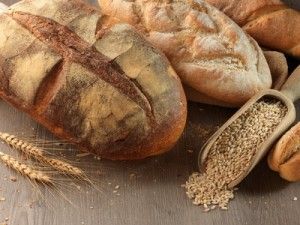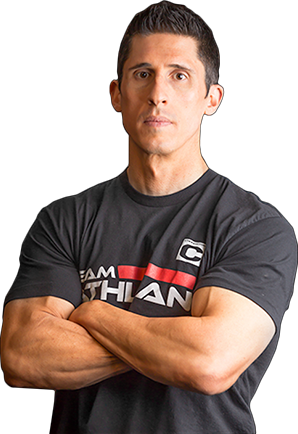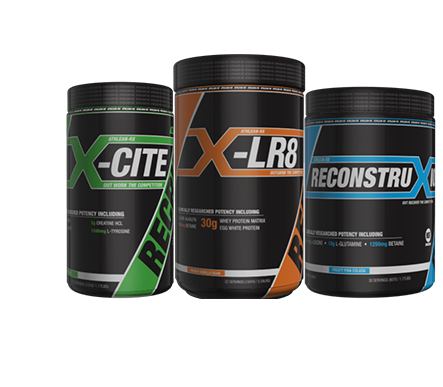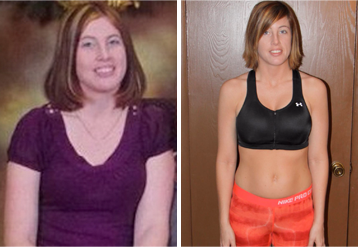 New here? Like Athlean-XX for Women on Facebook to stay up to date with new posts, great fitness and nutrition articles, motivations and inspirations, fitness challenges, Q&As, giveaways and more!
New here? Like Athlean-XX for Women on Facebook to stay up to date with new posts, great fitness and nutrition articles, motivations and inspirations, fitness challenges, Q&As, giveaways and more!
Try as we may to base the majority of our diet in whole foods like lean meats, nonfat dairy, veggies, fruits and whole grains, most of us probably eat some kind of processed food on a regular basis. Processed foods have become so commonplace in our ever busier lives that it’s become tough to live life without them because of time and budgetary constraints.
Since we’re concerned about living as healthy a lifestyle as possible, when we do eat processed foods we make every attempt to eat the healthiest possible versions. But, in the supermarket we’re left trying to figure out what’s the best option between foods with health claims like “multigrain,” “whole grain” and “whole wheat.” To demystify this task I’ll be writing a series of blog articles, one each week, to help us understand what the various processed food health claims actually mean. We’ll tackle FDA definitions, USDA recommendations and food industry standards to figure out what are the best options for our health, and where sometimes food labeling might lead us astray.
This week, let’s look at flour-based products, the FDA definition for “whole grain” and who sets the standard for whole grain food labeling.
For the purpose of truly understanding the food we eat, bear with me through this explanation of what a grain really is and what whole grain means. For our definition, grains include foods like wheat, rice, corn, barley, oats, rye, amaranth and quinoa (lentils, beans and the like fall into the legumes category).
A whole grain kernel contains three parts: the bran, the endosperm and the germ. The bran is the outer coating that protects the kernel. It is rich in fiber and contains B vitamins and other trace minerals. The endosperm is the middle layer that contains lots of carbohydrates and some proteins. The germ is the small core of the kernel that is full of antioxidants, vitamin E, B vitamins and healthy fats. The majority of grain eaten by most of the industrialized world today is refined wheat flour that contains only the endosperm. It is stripped of its outer bran and its internal germ, leaving essentially pure carbohydrate and a nominal amount of protein with very little fiber and nutrients remaining.
“Whole grain” means that the grain is left with its endosperm, bran and germ, meaning that it retains all of its nutrients. Whole grains have a less intense effect on blood sugar levels because the fiber in the bran of the grain kernel helps the grain to digest more slowly. This also helps you to stay full and sustain energy levels for longer.
FDA DEFINITION OF “WHOLE GRAIN” AND THE REALITY OF FOOD PACKAGING LABELS
To meet the FDA’s definition of ‘whole grain’ the food must contain at least 51% whole grain by weight. The whole grains must also contain at least 11% fiber. Single ingredient whole grain foods (brown rice for example) don’t need to meet the fiber test to meet the “whole grain” definition.
Other claims such as ‘multigrain’ and ‘whole wheat’ don’t have much in the way of FDA definitions. Multigrain foods must contain more than one type of grain, but all of the grain within them can be refined. Bread is the only food that by law must contain 100% whole wheat to be labeled ‘whole wheat.’ Other wheat products such as crackers don’t have to adhere to that guideline.
Strangely, it does not appear that the FDA’s definition has any weight in product packaging. Instead, the Whole Grains Council has its own definition and packaging label standard for whole grains. The Whole Grains Council is a non-profit organization that is “working to increase consumption of whole grains for better health.” However, it is important to note that the membership of the Whole Grains Council is made up of representatives from corporations that sell whole grain products.
In order for a product to utilize their ‘basic’ whole grains label, the product must contain only 8g of whole grain per serving. Serving sizes can vary greatly, so this means that products labeled as ‘whole grain’ could contain significantly more refined grains than whole grains. To better understand this, check out this report by ABC news on whole grain label claims.
So, what does this mean to you? You may be getting significantly less whole grains in your processed foods than you thought you were. Unless the food box specifically states “100% whole grain” it’s likely that a product labeled ‘whole grain’ contains a large share of refined grains. Anything called ‘multigrain’ or may not have any whole grains at all.
So, what’s the best way to ensure you’re eating healthy whole grain products? The best way is to avoid processed foods and opt for the healthiest whole grains in their original form such as brown rice, quinoa and oats. If you do wish to eat processed foods with whole grains, read the labels fully to help you make your choice. Look for labels that state “100% whole grain” or look for products whose first ingredient on the ingredient list is whole grain.
Are you looking for a nutrition plan that removes the confusion of making healthy food choices? Our Athlean-XX for Women nutrition plan recommends combining lean proteins, fruits and vegetables, and slow-burning carbohydrates at every meal and snack to help keep you feeling full. In fact, the Athlean-XX for Women nutrition plan is anything but a diet – we actually recommend you eat MORE – 5 – 6 times per day! This type of diet will help turn your metabolism into a fat burning machine – when combined with our killer 30 minute workouts. Yes, with Athlean-XX for Women, eat more, exercise shorter but harder and weigh less! Join us on Team Athlean to start your lifestyle makeover now!
And finally, if you’d like to stay up to date with the AthleanXXforWomen.com blog, then please like us on Facebook, follow us on Twitter and follow us on Pinterest.
P.S. We are a growing community dedicated to and passionate about realistic fitness and nutrition for REAL women. If you enjoyed this post please feel free to share on Facebook, Twitter and Pinterest. It would be incredibly appreciated.











